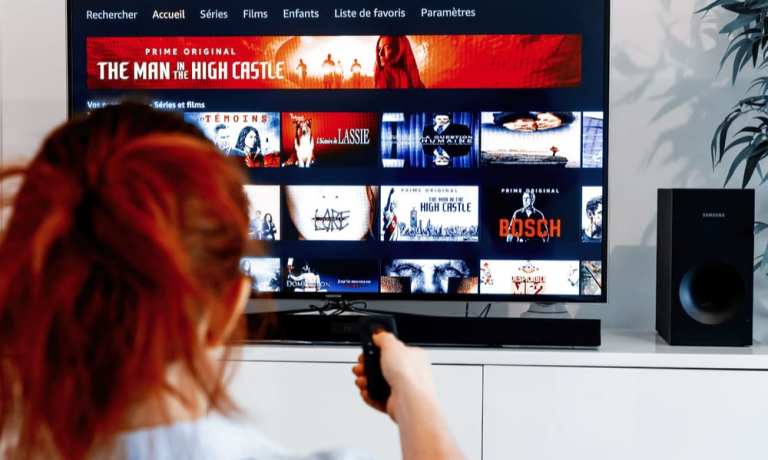Amazon Watch Parties Enable 100+ Users To Stream Together

While video streaming has always been by its very nature something of a solo activity, the pandemic-driven lockdown has changed that. As it turns out, consumers still want to enjoy movies together – even if movie theaters are shut down and most people remain concerned about going anywhere with others. Various streaming services have rushed to meet that need for togetherness by making it possible for people to simultaneously stream films together.
The latest entrant into the world of share-streaming is Amazon, which this week introduced a new ability for as many as 100 Prime members to simultaneously stream content by tapping into its new Watch Party feature.
The feature, currently only available to U.S. customers, requires that each member of said Watch Party is a Prime member. Once logged into the party, users have the option to choose between the thousands of Prime-included movies and shows. That includes both Prime original series (The Boys, Jack Ryan, The Marvelous Mrs. Maisel) as well as licensed content made available to subscribers through the service. The content must be included with the Prime subscription itself – movies and programming purchased from the platform cannot be streamed within the Watch Party setting.
In addition to allowing the synchronized playback of the film, the Watch Party comes with a built-in chat feature so guests can discuss the experience as it happens, similar to the functionality of Twitch (Amazon’s streaming service that is mostly dedicated to video gameplay). However, while anyone with a Prime account can log into a Twitch creator’s viewing session, Watch Parties are only accessible via an invite from a host that includes the link that is necessary to join.
So why add social streaming? In some sense, Amazon is playing catch-up to the other big players in the ongoing war for streaming dominance – though Amazon has taken the somewhat surprising step of building its own in-house. WarnerMedia, Disney and Netflix partnered with Scener, an online video chat tool that allows people to sign into their streaming accounts to watch movies and TV shows with other subscribers, making streaming content on Disney+, HBO Max and Netflix a sharable activity. Amazon, it seems, wants to keep control of the entire experience – but why?
One theory is that it is easier to directly monetize that way.
Since the start of the pandemic, streaming has become a big business, and one that is looking increasingly likely to compete with customers’ return to actual theaters. Because in a world without theaters, the movies have gone to the consumers instead of consumers going to the movie. Trolls World Tour, Sonic The Hedgehog, Emma and Onward were all released directly to streaming, offering consumers an opportunity to pay ~$20 for a 48-hour window to stream their new release.
Will this be the way people go to the movies going forward? Experts are unsure.
“While it is entirely possible that movie theaters [may] reopen in the fall of 2020, the question becomes: What does that mean?” LightShed Partners Analyst Richard Greenfield said, as relayed by MarketWatch. “If a 300-seat movie theater does every other row and every other seat for social distancing, its capacity falls to just 78 (down 74 percent).”
But, he noted, there is still work to be done. Universal Studios’ Trolls World Tour skipped theaters, went direct to consumer and became the largest digital revenue-earning movie in history, exceeding Disney’s Avengers.
“We are talking about a sequel to a $346 million box-office film, not a $1 billion to $2 billion blockbuster,” Greenfield wrote in the note.
The concern about competition has led to open sniping between movie studios and theater chains, which have threatened to ban those that release their films to streaming in parallel to their theatrical release. But if consumers aren’t going to the theaters, it seems that threat has limited force – and Amazon’s in-house shared streaming at this juncture is interesting.
Though as of now, Prime members can only share the free content offered by Amazon, one can easily imagine a world where Watch Parties could be extended to groups that had all chosen to rent a new release at the same time, thus allowing Amazon to sell “tickets” to the virtual theaters it is now equipped to run directly out of its already popular Prime Video platform.
When combined with rumors that Amazon is currently contemplating a purchase of the struggling AMC Theatres chain, the possibility for the eCommerce giant to create virtual theaters that work in concert with physical ones – instead of in competition with them – represents an interesting potential shift in the world of cinema entertainment.
While it’s still not known how long it will be before we can physically go to the movies together, with Amazon’s help, it will be easier to go digitally together on Prime Video – and perhaps, down the line, even see new releases that way.